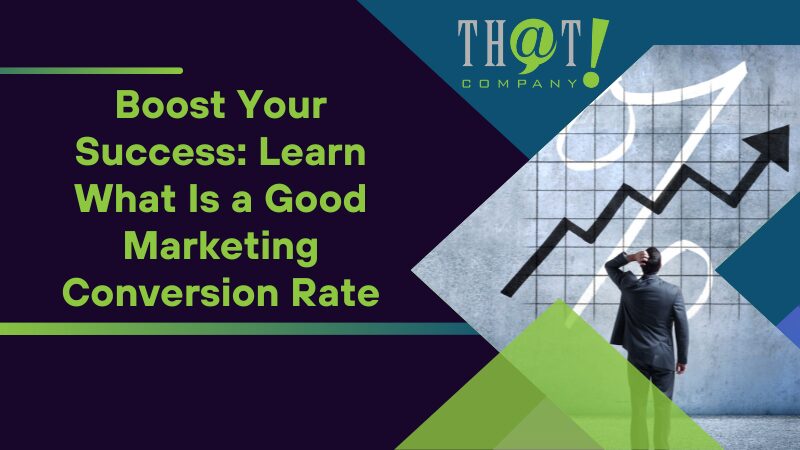
If you’re looking to benchmark your marketing performance, understanding “what is a good marketing conversion rate” is crucial. Good marketing conversion rates typically fall between 2% and 5%, yet truly competitive marketers aim for much higher. This article delves into what these numbers mean and the factors that influence them—without settling for the average, let’s strive for peak performance.
Key Takeaways
- Conversion rates are vital for evaluating marketing campaign effectiveness and optimizing sales funnels can range from 2% to 5% as an industry average, while aiming higher can enhance ROI.
- Good conversion rates vary significantly by industry and channel, with benchmarks set by high-performing sectors and the need for channel-specific strategies, such as email and social media marketing, to improve conversions.
- Conversion rate optimization enhances user experience, creates compelling content, and leverages A/B testing. In contrast, continuous monitoring and adjusting marketing strategy based on performance data are crucial for sustained improvement.
Understanding Marketing Conversion Rates
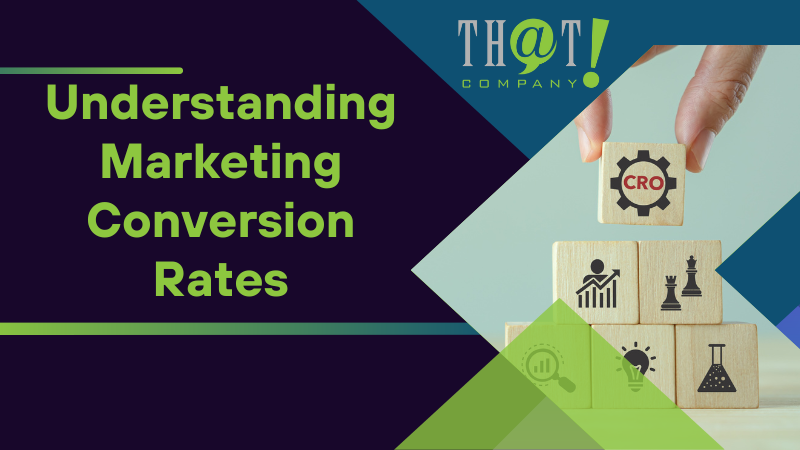
Marketing conversion rates serve as a guide for your marketing strategies. They measure the percentage of website visitors who complete a desired action, such as purchasing or responding to a call to action. But why does this metric matter? Here’s why: it helps assess the effectiveness of your marketing campaigns, makes your value proposition clear to your customers, and is essential for optimizing your sales funnel.
Enhancing your conversion rates can lead to the following:
- Strengthening your ROI
- Lowering your cost per conversion
- Increased profitability
- More accurate predictions of customer behavior
Adopting the right approach can transform your website into a conversion powerhouse, transforming curious visitors into loyal customers.
Types of Conversions
When discussing conversions, the mind immediately jumps to completed sales transactions – and rightfully so. In the world of e-commerce, conversions are indeed primarily viewed as completed sales transactions. But the conversion realm is broader than just that.
Your website’s overall conversion rate accounts for a variety of conversion actions. These could include:
- Orders
- Newsletter subscriptions
- Presale signups
- Adding items to the cart
For this blog post, however, we will primarily focus on e-commerce conversions – the act of completing a sale.
Importance of Tracking Conversions
Awareness of and tracking your conversion rates is akin to a roadmap to success. It’s critical for:
- Building a data-driven marketing strategy
- Avoiding decisions based solely on intuition
- Refining your marketing strategies
- Enhancing your targeted campaigns and segmentation efforts
Tracking conversions is your best ally.
But it doesn’t stop there. Tracking conversions is significant for financial planning as it helps set ROI expectations when scaling marketing efforts. By improving your conversion rates, you can increase your revenue without a corresponding increase in marketing spending, enhancing your ROI.
Determining a Good Marketing Conversion Rate
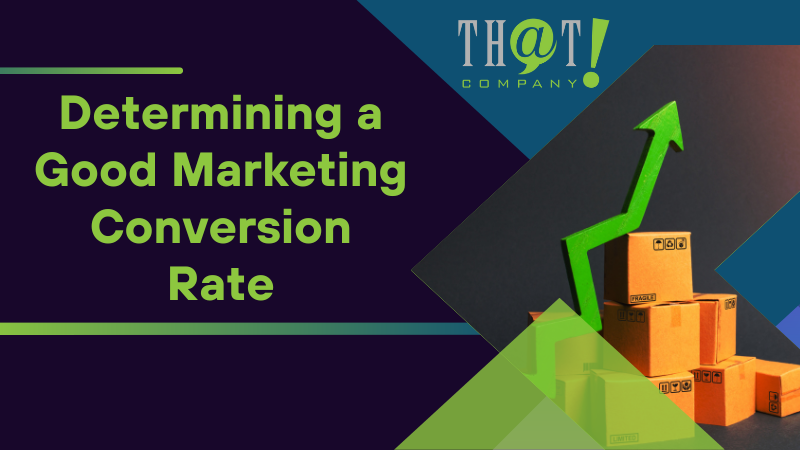
So, what defines a good marketing conversion rate? It’s a question many marketers grapple with. The truth is that a good marketing conversion rate can fluctuate significantly based on the industry and the channels used for marketing. A 5% rate might be average for one sector but below or above average for another.
A 2% to 5% conversion rate is generally considered good in marketing. It indicates that most of the audience is taking the desired action. However, the game of marketing is not one to settle for average. Aim for higher benchmarks such as 10%, 20%, or even a notably high 30%. Remember, the price points are a significant factor in determining a good conversion rate, with the average conversion rate typically decreasing after certain price thresholds such as $50, $150, and $500. To achieve greater success, target conversion rates double or triple the average. This is a strategy followed by top advertisers who often outperform the average by substantial margins.
Industry Averages
We should examine industry averages to understand better what makes a good conversion rate. Across all industries, the “good” website conversion rate is typically between 2% and 5%. This range is considered favorable for businesses seeking to optimize their online performance. However, high-performing industries on Google Ads, such as Law & Government and Vehicles, can have average conversion rates as high as 7.45% and 7.98%, respectively.
The average conversion rates for different advertising platforms and industries are as follows:
- Google Shopping: 1.91%, with certain industries like HVAC & Climate Control seeing as high as 3.30%
- Facebook Ads: average conversion rates across various industries can go as high as 14.29% for the Fitness industry and 13.58% for Education
- eCommerce sector: top tier e-commerce conversion rate reaching as high as 24.48%
Good conversion rates can vary significantly depending on the industry, and it’s essential to consider this when evaluating your performance.
Channel-Specific Conversion Rates
Conversion rates can fluctuate by industry and significantly across different marketing channels. For instance, email marketing is effective with a conversion rate generally considered good between 2% to 5%, depending on the industry.
Social media is another potent channel for conversions, with 2-5% rates indicating significant engagement. Influencer marketing can further enhance this through trusted referrals.
Lastly, search advertising on platforms like Google and Bing have varying conversion rates, with Google Ads search network averaging 4.40% and Bing’s Careers & Employment sector reaching 6.81%. Understanding these channel-specific conversion rates can greatly inform your marketing strategy and help you allocate resources more effectively.
Calculating Your Marketing Conversion Rate
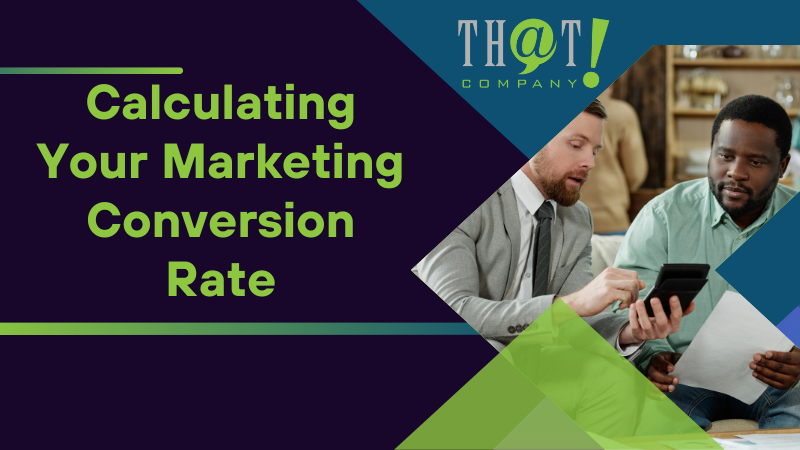
Are you prepared to research your data and determine your marketing conversion rate? The first step is deciding what specific action or outcome you want to measure. This could be anything from an order placement to a subscription sign-up.
Once you’ve decided on the action to track, use analytics tools like Google Analytics to monitor the total number of visitors to your site and identify how many visitors completed the desired action. Calculate the marketing conversion rate using the formula: (Number of Conversions / Total Number of Visitors) x 100. For instance, if you had 1,000 visitors and 20 made a purchase, your conversion rate would be 2%.
The Conversion Rate Formula
The conversion rate formula serves as your key to calculating conversion rates, uncovering the success of your marketing efforts, and boosting conversions. By showing the percentage of total interactions leading to conversions, it quantifies the effectiveness of your marketing tactics using conversion rate measures.
The formula for conversion rate is straightforward. It involves dividing the total conversions by the total visitors and multiplying the result by 100. By measuring the percentage of visitors who complete a desired action, you can assess the efficiency of your sales and marketing tactics. Remember, a higher conversion rate suggests that your marketing strategy successfully engages the intended audience and that your sales message is compelling.
Utilizing Analytics Tools
For tracking and measuring conversion rates, Google Analytics is a marketer’s close ally. You can configure goals to represent specific user actions, which are crucial for tracking success on websites.
Google Analytics provides reports and segmentation options to analyze goal conversions, behavior flows, and performance across different segments, such as device types or traffic sources. Other comprehensive tools like WordStream’s Google Ads Performance Grader are also valuable for measuring conversions concerning campaigns.
With these tools, you can track and analyze your marketing conversion rate.
Strategies for Improving Your Marketing Conversion Rate
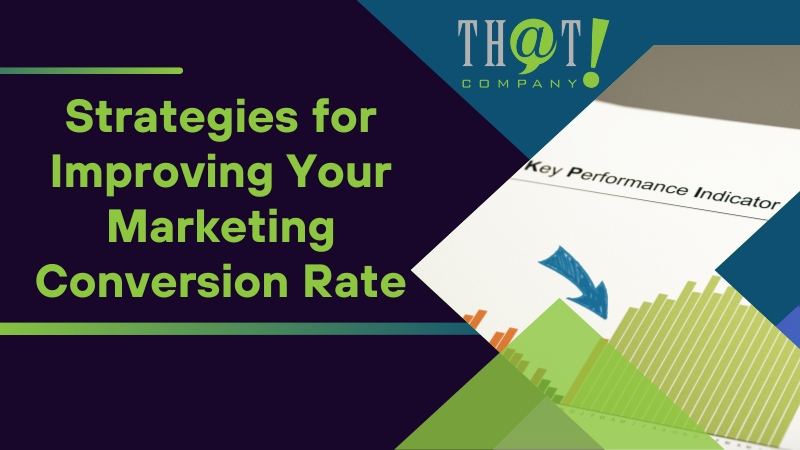
Having learned how to calculate your conversion rate, the subsequent step is to enhance it. Conversion rate optimization is a systematic and data-informed approach to increasing the percentage of visitors who take the desired action on a website.
Strategies to boost your conversion rates can include:
- Revamping product display pages
- Limiting form fields
- Testing multiple landing pages
- Employing remarketing and A/B testing
Remember, a higher conversion rate suggests that your marketing strategy successfully engages the intended audience and that your sales message is compelling.
Enhancing User Experience
In the process of enhancing conversion rates, user experience plays a vital role. You can significantly enhance the user experience and conversion rates by making transformative changes in optimization.
Some strategies to improve user engagement and conversion rates include:
- Mobile-responsive design, which involves fast loading times, user-friendly navigation, and accessibility on various devices
- Optimizing calls to action
- Utilizing A/B testing
- Employing personalized, engaging content like video
These strategies are crucial to enhancing user experience and boosting conversion rates.
Crafting Compelling Content
Content reigns supreme in marketing, and creating engaging content is pivotal to boosting conversion rates. Understanding your audience, their needs, and motivations is a good starting point for creating content that engages and converts.
High-quality content attracts, engages, and persuades the target audience by providing valuable information and showcasing product/service benefits. It’s also important to optimize content for search engines while maintaining its value.
By crafting catchy titles, creating special landing pages for paid ads, and including compelling calls to action, you can create a compelling landing page that leads to more targeted conversions.
Leveraging A/B Testing
A/B testing, or split testing, is a simple method employed to contrast various versions of web pages and identify the one that results in more conversions. Due to its simplicity and the availability of tools, A/B testing is a popular tactic for conversion optimization.
Effective A/B testing:
- It is strategically integrated into marketing, focusing on elements like CTAs and headlines
- Utilizes step-by-step processes for accurate results
- Offers quick, actionable results
- Reduces the risk of costly changes by validating major decisions through observed differences in variations.
The long-term benefits include improved overall user experience, lower bounce rates, and higher conversion values, leading to significant revenue growth.
How Adding That! Company to Your Agency’s Arsenal Helps You Compete

Collaborating with a white label agency such as That! Company can elevate your marketing endeavors. It can lead to enhanced client retention, increased referrals, and overall revenue growth.
These providers operate anonymously, allowing you to maintain sole recognition for the work done. They can fill in service areas that your agency might lack, enhancing your offering without the need for additional internal resources. By incorporating white label services, you also gain access to a team of professionals with expertise in various digital marketing fields, enhancing the quality of services provided to your clients.
With white label company, you can deliver high-quality services more quickly and efficiently, as they have the expertise and systems to manage large-scale operations.
Monitoring and Adjusting Your Marketing Strategy
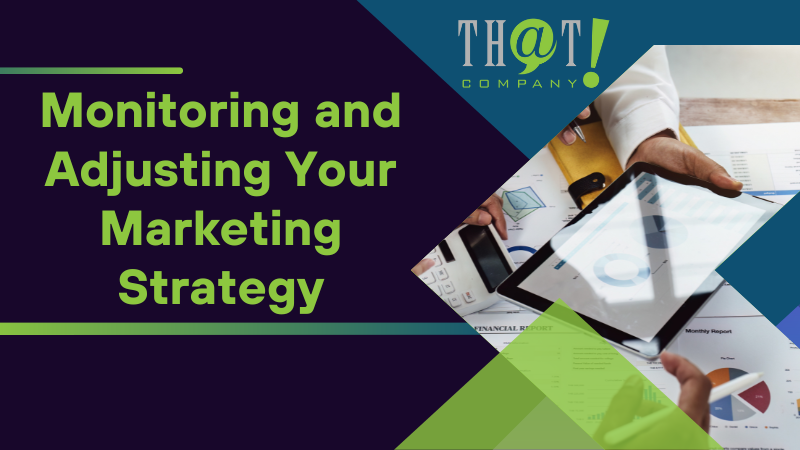
For businesses aiming to optimize their conversion rates, it is imperative to monitor and adjust their marketing strategy constantly. It’s about striving for continuous improvement and optimizing your conversion rate over time.
You can achieve your desired conversion rates by diligently monitoring performance metrics, testing different strategies, and applying the insights gained from data. Establishing regular review intervals is vital to avoid overreacting to short-term fluctuations and correctly interpreting long-term trends in e-commerce conversion rates.
It’s also crucial to assess conversion rates based on initial clicks and further along the sales funnel to measure the full impact of your marketing efforts effectively.
Setting Realistic Goals
In marketing, setting specific, measurable, achievable, relevant, and time-bound (SMART) goals is paramount. But remember, setting goals is not a one-time event. They should be revisited and adjusted regularly, such as quarterly, to respond to market changes and remain consistent with long-term business strategies.
Incorporating affirmations and rewards for achieving goals and consequences for not meeting them can keep individuals and teams focused and motivated to reach their marketing targets. With realistic goals, you’re better equipped to monitor your progress and make necessary adjustments to your strategies.
Analyzing Performance Data
Analyzing your performance data is a fundamental aspect of enhancing your conversion rate. Conversion rate analysis is key to understanding which marketing channels yield the best campaign results.
You can assess marketing effectiveness and guide future investments by comparing conversion rates across advertising channels. Furthermore, tracking user engagement metrics such as bounce rate, time on site, and collecting user feedback are integral for gauging the impact of user experience improvements on conversion rates.
Analyzing data and user feedback can help fine-tune your content strategies to meet your brand objectives better.
Summary
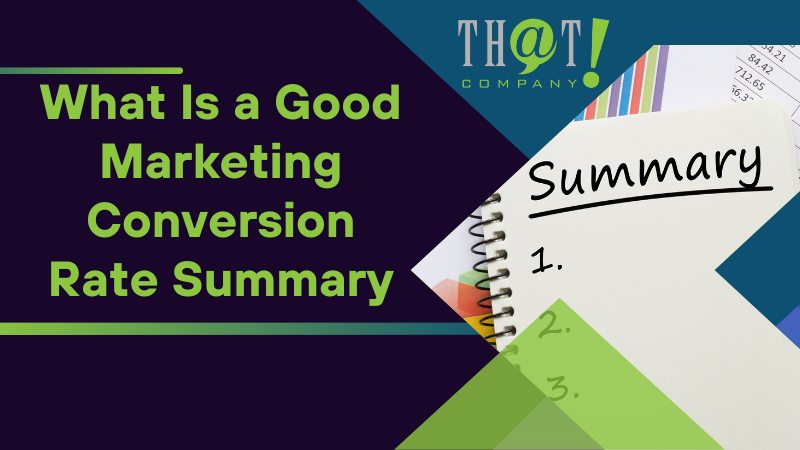
Understanding and optimizing your marketing conversion rates is key to enhancing your marketing strategies and achieving a higher ROI. From understanding what constitutes a good conversion rate to implementing strategies for improvement, mastering conversion rates can provide a competitive edge in your marketing efforts. Remember, the journey to successful conversion rate optimization is a continuous process that requires monitoring, analysis, and adjustment. So keep pushing, keep testing, and keep optimizing!
Frequently Asked Questions
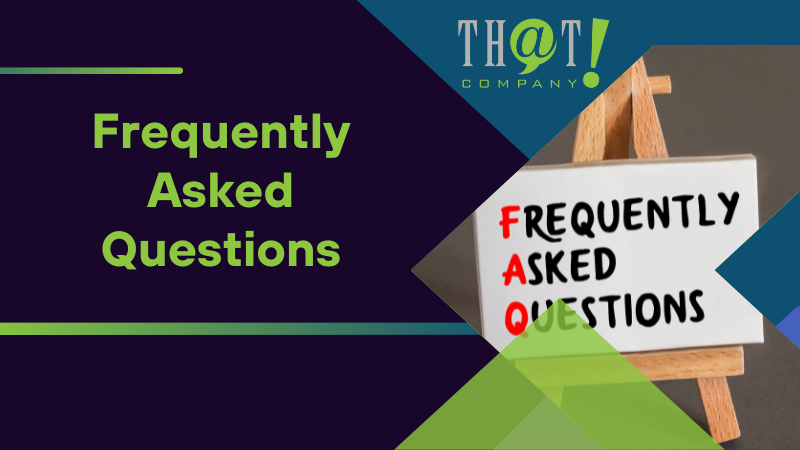
Is a 30% conversion rate good?
A 30% conversion rate is considered very good, as it is above the common success range of 20-25% for companies achieving high conversion rates. Achieving a 30% or higher conversion rate is exceptional and signifies strong performance in converting leads.
Is a conversion rate of 1% good?
A conversion rate of 1% is considered normal, but it is generally seen as good when it reaches between 2% and 5%. However, it’s important to remember that constantly increasing conversion rates may not always be feasible or necessary.
How is the marketing conversion rate calculated?
To calculate the marketing conversion rate, use the formula: (Number of Conversions / Total Number of Visitors) x 100.
What strategies can be used to improve conversion rates?
To improve conversion rates, focus on enhancing user experience, crafting compelling content, and leveraging A/B testing. These strategies can help increase engagement and drive more conversions.
Why is it important to monitor and adjust marketing strategies?
It is important to monitor and adjust marketing strategies to optimize conversion rates over time, interpret long-term trends accurately, and measure the full impact of marketing efforts. Period.

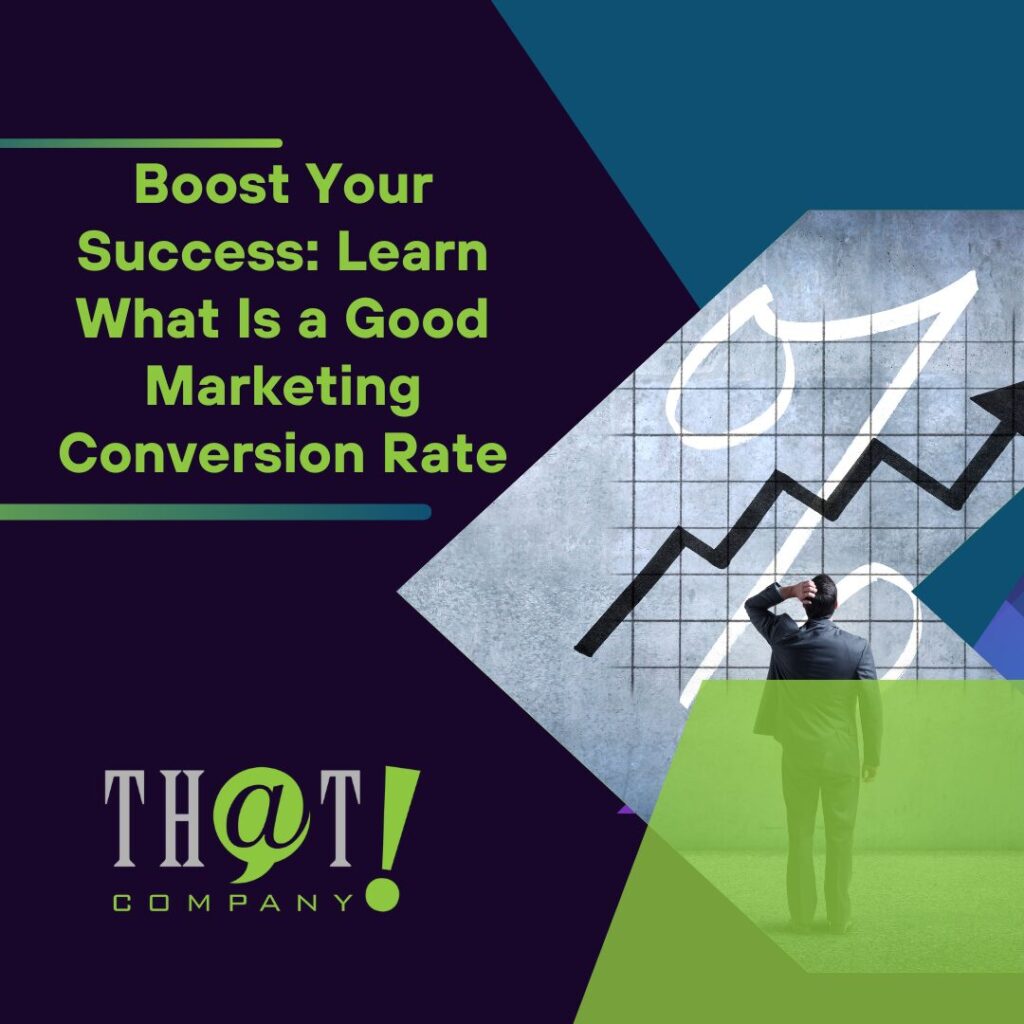

























 Talk With Us
Talk With Us  Give Some Love
Give Some Love 


